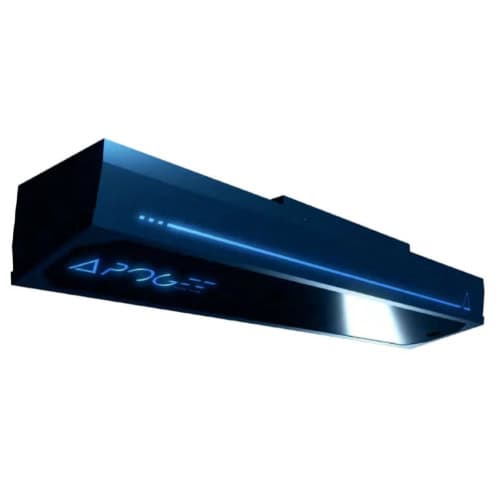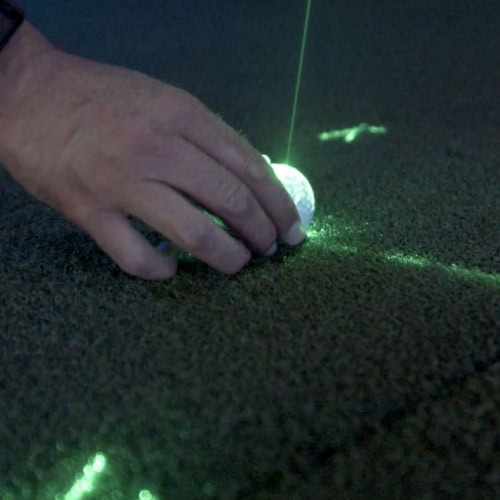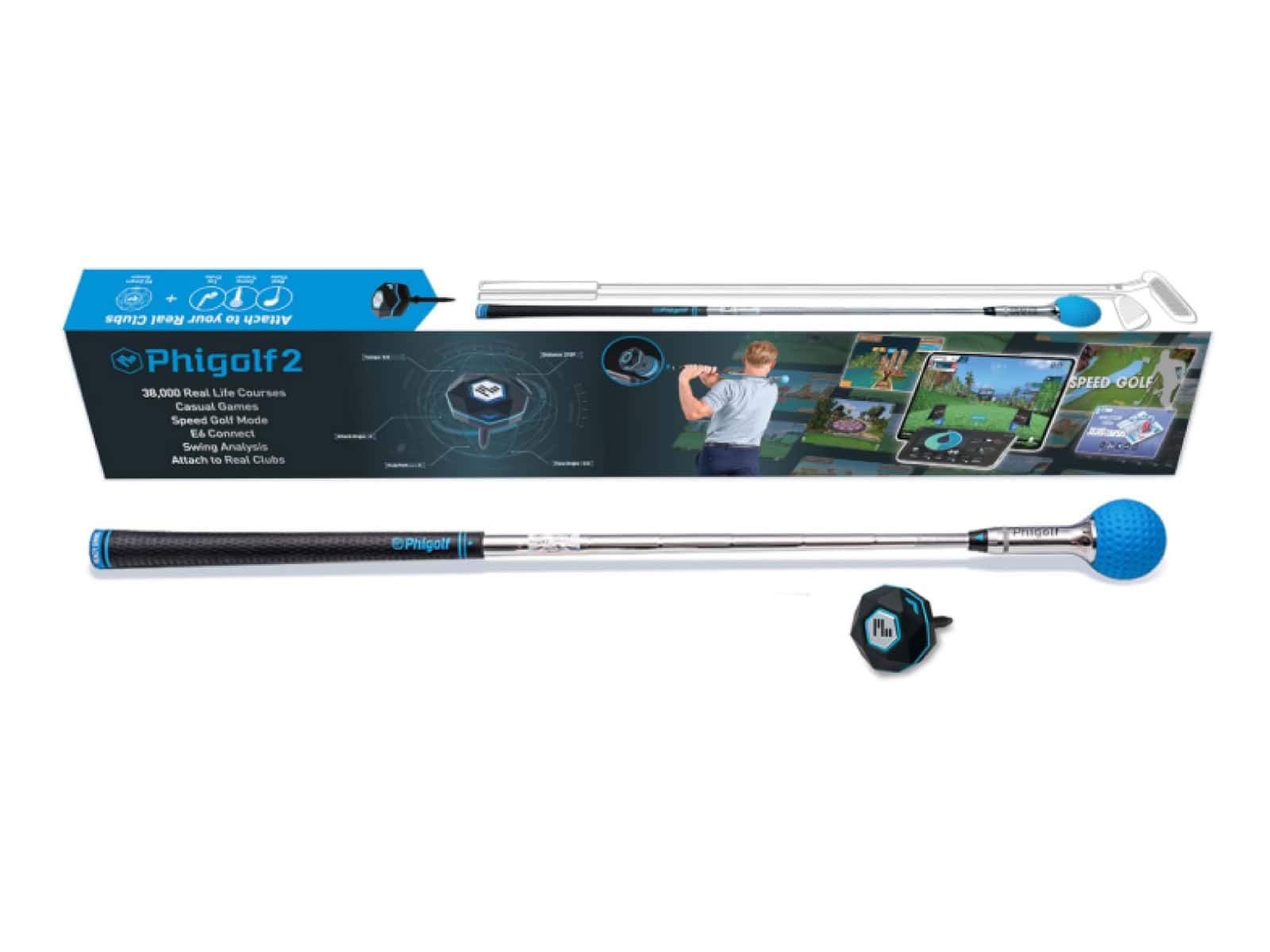Nearly 70% of golfers say they don’t practice enough due to weather, time or course access. The TruGolf Max Golf Simulator Package can solve that by offering a complete indoor setup that feels like real golf. We tested this system extensively to evaluate its performance, accuracy and overall experience.
This is a test-based review, built on hands-on use of the full simulator package. We examined every detail, from installation and build quality to software features and ball data, to help you decide if the TruGolf Max is worth your investment.
Unboxing and First Impressions
Before setting anything up, the first encounter with a simulator matters. Packaging, build quality and component clarity all shape early expectations, and the TruGolf Max sets a serious tone from the start.
What’s in the Box?

Unpacking the TruGolf Max Sim Package feels closer to opening a high-end studio kit than a sports device. Every item is packed securely and labeled clearly for quick identification. Here’s what the full kit includes:
- TruGolf Apogee overhead launch monitor
- 15-foot widescreen hitting enclosure with tensioned impact screen
- Commercial-grade hitting mat with stance platform
- Ceiling-mount short-throw projector
- Industrial-grade gaming PC (or BYO option)
- E6 Connect software with 27 pre-loaded courses
- All mounting hardware and cabling
The box contents reflect a system built for longevity with no flimsy parts or confusing bundles. Every major component ships in a structured layout, with easy-to-follow instructions sitting right on top.
Initial Reaction
Lifting each piece reveals how serious this system is. The aluminum framing is thick and reinforced. The projector mount feels steady and secure. The hitting screen is dense enough to absorb speed without flapping or sagging, which speaks volumes about durability.
The mat deserves mention. It’s not the kind you replace every season. The hitting surface mimics fairway resistance without shock, and the stance platform supports footwork without slipping.
During our test, the quality was evident from the first touch. You don’t need to swing a club to know this isn’t an entry-level setup.
Everything about the unboxing makes one thing clear: this simulator wasn’t built for casual use alone. And once the frame goes up and the sensors activate, that’s when the real story begins.
Installation and Setup

We tested the TruGolf Max from the ground up to see if its promise of plug-and-play convenience holds up under pressure.
Room Requirements
Before starting, we measured the recommended clearances. The system requires the following:
- Ceiling height: minimum 10 feet
- Room width: at least 15 feet
- Depth: 20 feet or more for full swing and screen projection
- Flat flooring with stable electrical access
- Reliable internet for software syncing and updates
These dimensions allow proper ball flight visualization and safe swing clearance. Anything less can limit functionality, especially during full driver use.
Assembly Experience
The frame arrives in modular pieces with labeled connectors. The tubing slots together cleanly without forcing. With two people, total assembly time was just under 3 hours. Here’s the sequence we followed:
- Assembled the aluminum frame and screen supports
- Mounted the projector and aligned it with the screen
- Secured the blackout curtains and side netting
- Placed the stance platform and the hitting mat
- Installed the Apogee sensor overhead
- Ran all cables and powered on
Each step matched the instruction guide closely, and no special tools were required beyond an Allen key and drill for ceiling mounts.
Launch Monitor Setup

The Apogee launch monitor powered up, connected via USB to the PC and began auto-calibrating within 30 seconds. It didn’t need stickers, markers or special balls.
Auto-calibration completed in under 15 minutes, and alignment targets appeared automatically for fine-tuning. No manual sensor tweaks were needed, and E6 Connect software recognized the hardware immediately
Once calibration finished, the first practice session was ready to launch; no firmware updates, driver downloads or surprise steps.
For golfers who want a full breakdown of performance, accuracy, and long-term usability, our in-depth TruGolf Apogee review covers everything from data metrics to real-world testing results.
Build Quality and Design
We inspected each component of the TruGolf Max to see if its construction matches its price.
Enclosure and Frame
The frame uses thick aluminum tubing with reinforced corners and snap-lock connectors. It stands solid without wobble, even under hard driver swings.
The structural frame is made from powder-coated aluminum with tight fitting joints maintaining screen tension. The curtain tracks are smooth and support blackout side panel.
The entire enclosure stays firm even under repeated pressure, giving it a commercial-grade feel without needing permanent walls or anchors.
Screen and Turf
The impact screen uses heavy-duty woven fiber that absorbs ball speed and minimizes bounceback. We tested driver shots above 160 mph, and the screen held without sagging or tearing. Surface tension stays tight after hours of use.
The hitting mat includes multiple layers:
- The top layer simulates fairway resistance without strain
- A Shock-absorbing base layer protects joints
- The stance mat matches turf level for even footing
- The modular design allows replacement without moving the frame
The turf feels firm but fair. You can hit down on wedges without fear of injury or slipping. Even after extended use, we noticed no signs of fraying or compression.
Launch Monitor and Tracking Accuracy

The Apogee is a ceiling-mounted unit that uses high-speed optical sensors. It requires no stickers or marked balls, and it reads both club and ball data from overhead without interference. Data displays instantly, giving feedback within seconds.
It tracks all the essential metrics: ball speed, club speed, spin rate, launch angle, face angle, club path, and carry distance. The overhead design supports a clear view regardless of your stance, swing speed or lighting.
What makes Apogee shine is its true indoor optimization, requiring no environmental adjustments and giving no missed reads.
Performance Testing
We ran side-by-side tests with Trackman and GCQuad, using Pro V1 balls and a mix of driver, mid-iron and wedge shots.
The results were really strong:
- Carry distance matched within 2 yards
- Ball speed stayed within 1.2 mph
- Launch angles varied by less than 1 degree
- Fade and draw patterns aligned with actual swings
Short game performance also impressed us. After activating the putting calibration, the Apogee tracked putts with distance accuracy within 6 inches and consistently detected face angle and start direction.
Response time remained fast throughout. Every shot appeared on-screen with full data in under two seconds, even after extended use.
Software and Gameplay

E6 Connect includes 27 courses by default, with more than 100 additional courses available for upgrade. Popular layouts like Pebble Beach, Bethpage Black and Bay Hill are available through extra licensing.
It supports multiple gameplay modes, including the following:
- Stroke play and match play for traditional golf
- Practice range with adjustable settings
- Online multiplayer for live matchups
- Mini games like closest to the pin and long drive
All game modes use the same data engine, which means feedback is consistent across every experience.
User Experience
The interface is clean and fast. You can control everything using either voice commands with the “Hey Apogee” command or a standard mouse. Switching between games or adjusting settings is quick. You can change weather, time of day and course difficulty with just a few clicks.
Load times average under 20 seconds, and transitions between holes are smooth. All shot data appears instantly, even in online play, which keeps the pace smooth.
Menus are organized by category, so first-time users won’t get lost. A guided tutorial helps new players learn the ropes. Once you start, the software automatically tracks your progress and scores.
Visuals and Sound
Graphics quality depends on your system, but with the included gaming PC and projector, the image scales up to 4K resolution with deep contrast and smooth textures. Trees sway, flags flutter and water reflects light naturally.
There’s no input lag, and ball delay is barely noticeable. That keeps every shot feeling snappy and reactive.
The sound design adds to immersion. Club impact, crowd noise and environmental effects like wind and birds are all synced to your actions. You hear what you see and feel what you hear.
Performance Realism

Shot shape feedback is where simulators usually reveal their weaknesses. But here, the system delivers a noticeably accurate curve and launch trajectory. A well-executed draw starts right and curves left with clean arc tracking. A mis-hit slice veers dramatically across the screen, just as it would on the course.
Launch height is visually and numerically accurate, especially with mid-irons and drivers. Low punch shots register with flat, skimming ball flight, and high wedge shots peak realistically and come down steep.
Spin behavior feels equally responsive. Full shots hold greens based on trajectory and backspin, while fades and hooks react with expected side spin. There’s a slight edge on full swings—enough to make you trust what you see.
But the system isn’t perfect. Low-speed chip shots occasionally register as slightly higher launch than expected, especially with lob wedges. That minor sensitivity issue could lead to a few misreads, but it’s rare enough not to break immersion.
Putting and Short Game
Putting is the hardest part for simulators to get right, but the Max system is impressively close. Roll tracking is smooth, with realistic deceleration over distance. On a flat 10-foot putt, the ball behaves just as you’d expect from real-world conditions.
Distance control works well, and you can adjust surface speed inside the E6 Connect settings.
Short chips and bump-and-run shots perform reliably, though you may need a few tries to perfect your swing tempo. Once you find your rhythm, the system registers short game data with good consistency.
Some may miss the tactile feedback of real turf on a putting green. But for an indoor simulator, the visual and data accuracy is more than enough for effective practice.
Multiplayer and Entertainment Options
Sometimes, what transforms a home golf simulator into the centerpiece of a weekend is how well it connects people. The TruGolf Max offers multiplayer depth and entertainment flexibility that make every swing social.
Suppose you’re interested in expanding beyond golf into other interactive sports and activities. In that case, our TruGolf E6 Interactive Camera review explores how TruGolf’s technology adds immersive multisport options that enhance both family play and competitive events.
Game Modes
The built-in game modes stretch beyond standard solo practice. With casual settings, families can play short rounds or target-based games that reward creativity more than accuracy. These modes simplify controls and reduce pressure, creating a more relaxed environment for mixed skill levels.
For advanced users, competitive formats add structure and pace. You can engage in tournaments, stableford rounds or skins games. These options are ideal for golf clubs and league nights, with customizable rules and automatic scorekeeping.
The simulator also includes online multiplayer with profile-based stat tracking. This feature allows you to compete remotely, compare shot histories and even see leaderboards update in real time.
Streaming and Content Creation
With HDMI passthrough, you can stream directly to platforms like YouTube or Twitch, broadcasting rounds, tutorials or virtual tournaments. This makes the TruGolf Max attractive to instructors, influencers and streamers who want to turn gameplay into content.
The software also supports custom avatars and digital scorecards, which can be exported and shared. After a game, you can email results, post screenshots or track performance in spreadsheets without extra apps or plugins.
Built-in leaderboards and round summaries keep players engaged long after the final putt drops. For casual fun or serious tracking, the entertainment side of this simulator runs deeper than expected.
Price and Value

Value isn’t always about spending less. It’s about getting more for what you spend. So how does the pricing shake out?
Price Breakdown
The full TruGolf Max Simulator ranges between $18,500 and $21,000, depending on configuration. That includes:
- TruGolf Apogee overhead launch monitor
- 15’ enclosure with impact screen
- Premium hitting mat and stance platform
- Short-throw projector with ceiling mount
- Industrial-grade PC or BYO device option
- E6 Connect software license with base course pack
Optional upgrades include:
- High-end projectors for better brightness and contrast
- Extra E6 Connect courses or full annual subscriptions
- Gaming PC upgrades for faster load times and 4K performance
If you’re expecting a lower price, this isn’t that simulator. But don’t scroll just yet; this package has a way of justifying its sticker.
Competitor Comparison
TruGolf Max falls into a competitive zone, especially for mid-to-high-end buyers evaluating multiple setups.
- Much more accurate than Mevo+ or SkyTrak
The Apogee’s overhead tracking system provides better spin and face angle data without needing club stickers. - Easier to install than Uneekor models
No permanent mounts, no complex calibration. Setup takes hours, not days. - More plug-and-play than Trackman indoor builds
Trackman offers flexibility, but requires more space, higher costs and complex integration. The TruGolf Max delivers a focused solution without compromise.
Where to Buy the TruGolf Max?
Finding the right place to purchase the TruGolf Max can affect your warranty, your support options and your total cost. But some retailers offer more than just a set of boxes; they offer better deals, extras and even white glove service. Here’s how to buy it smart.
Buying from authorized sellers ensures product authenticity and full access to customer support and warranties. You’ll also avoid issues with outdated versions or missing parts.
Trusted dealers include:
- TruGolf’s official website — Get it direct from the manufacturer with custom quote options.
- Top Shelf Golf — Another excellent online retailer with great customer service and financing offers.
Avoid third-party listings on auction sites or marketplaces. They may offer lower prices, but they often skip on warranty support or software licensing.
Buying Tips
Before purchasing, do the following:
- Measure first – Confirm that your ceiling height, room width, and space depth meet the minimum requirements. The TruGolf Max needs at least 10’ ceiling clearance and about 15’x20’ of floor space.
- Look for bundles – Some dealers offer discounts on packages that include a PC, upgraded projector or extra courses. These can save you several hundred dollars if bought together.
- Ask about white glove installation – Certain vendors provide professional setup services for an added fee. This can make a big difference if you’re uncomfortable with framing, calibration or software activation.
- Check availability – TruGolf Max systems may go on backorder during peak indoor golf season or trade show months. Plan purchases ahead of time to avoid delays.
Frequently Asked Questions
This section answers the most common questions buyers have before investing in the TruGolf Max. Whether you’re curious about compatibility, installation or playability, these answers can help.
Can I use real golf balls with this system?
Yes. The TruGolf Max supports real golf balls without limitations. Players who want quieter sessions can also use foam balls, which are fully compatible with the launch monitor’s sensors.
Is the TruGolf Max suitable for commercial use?
Absolutely. Its reinforced materials, consistent software updates and reliable tracking make it ideal for commercial settings like golf studios, training centers or retail demo bays.
Does it support left- and right-handed players?
Yes. The overhead Apogee launch monitor automatically tracks swings from either side. No repositioning or reconfiguration is needed.
Is Internet required to play?
Partially. Internet is required during setup and for E6 Connect software activation or updates. Once activated, the simulator supports offline gameplay using local profiles and downloaded courses.
Can I upgrade the projector or computer?
Yes. You can swap the included projector or PC for a higher-end model. Many users opt for 4K laser projectors or custom gaming PCs to maximize visual clarity and loading speed.
Final Thoughts
The TruGolf Max Golf Simulator Package meets the needs of players who expect professional-level feedback without the fuss of complicated installs or steep learning curves. It combines accurate shot tracking with immersive visuals, creating a simulator that feels natural to use and rewarding to master.
Every component, from the Apogee launch monitor to the E6 Connect software, works together without friction. The experience feels stable and complete, whether you’re grinding out wedge control or enjoying a casual round with friends. While the upfront price is high, the included features, game modes and build quality give it lasting value.
It’s a setup that grows with you. New software updates, optional upgrades and strong support extend the simulator’s life long after the first swing.
There’s just one question left: are you ready to bring this level of precision home?





